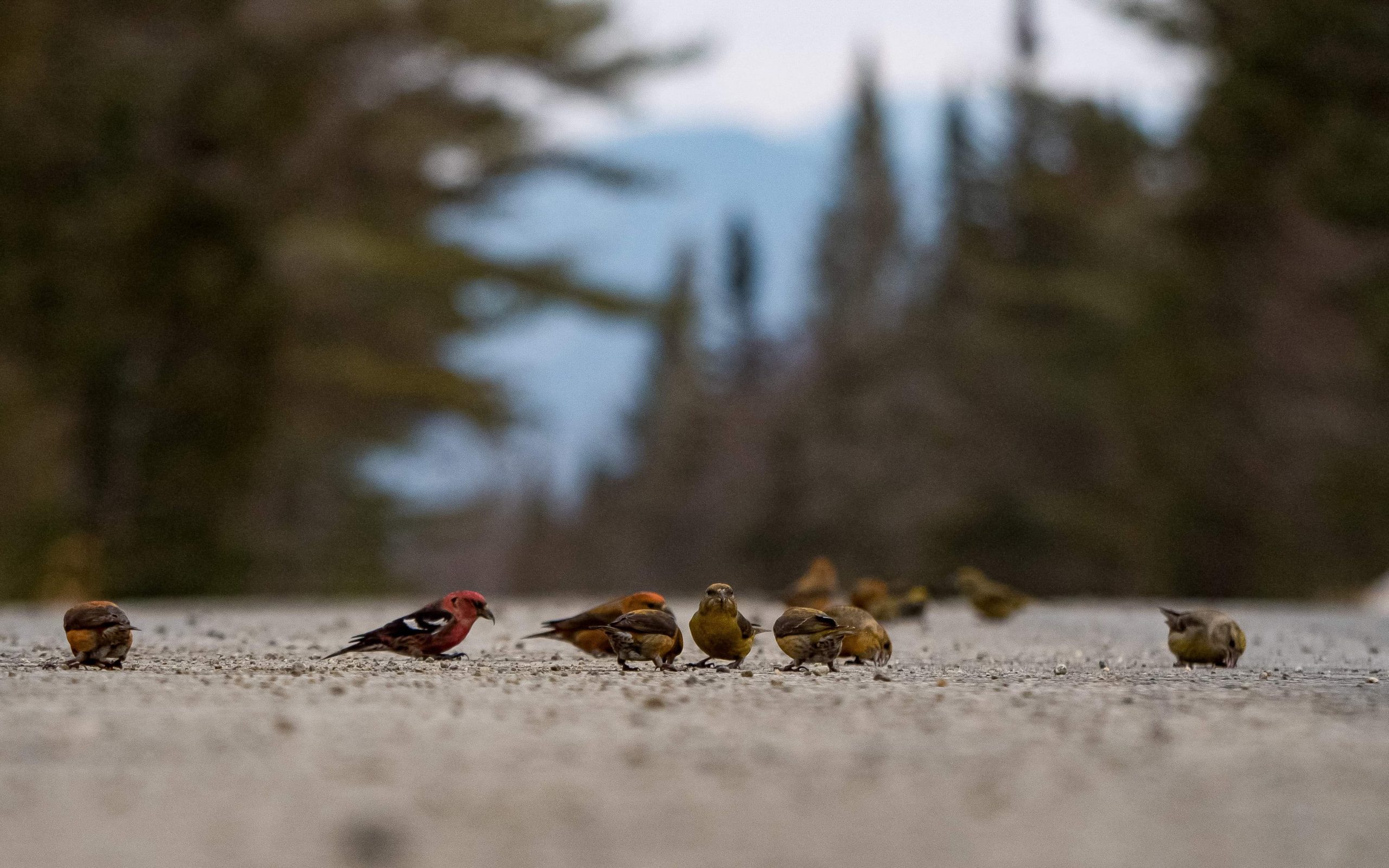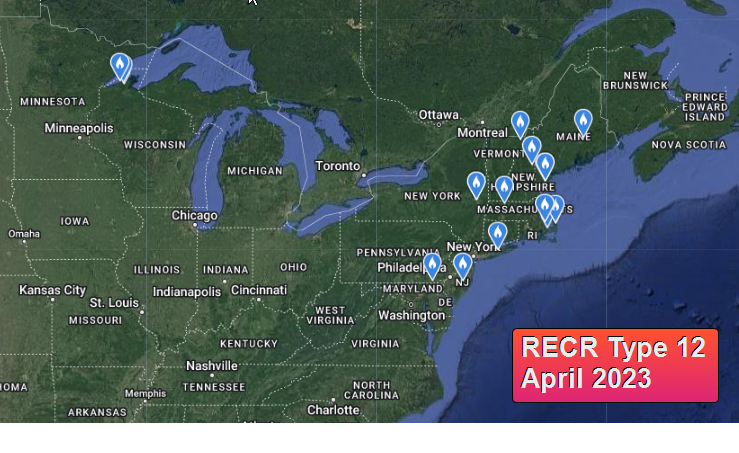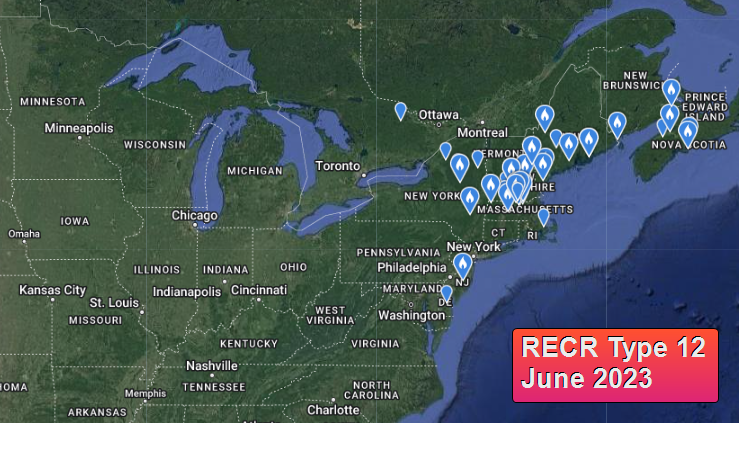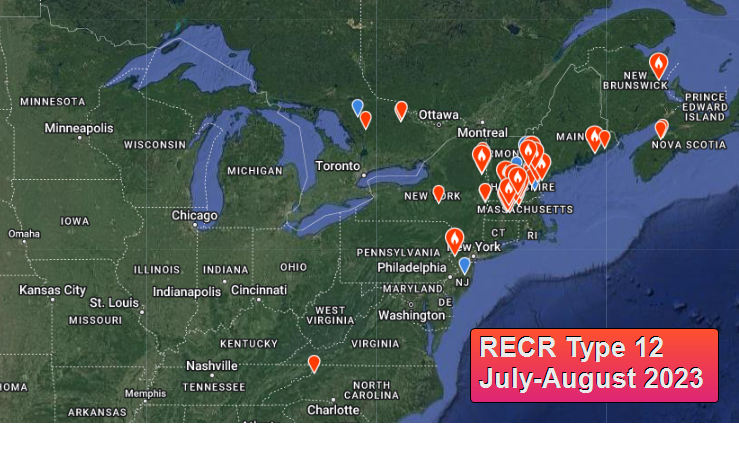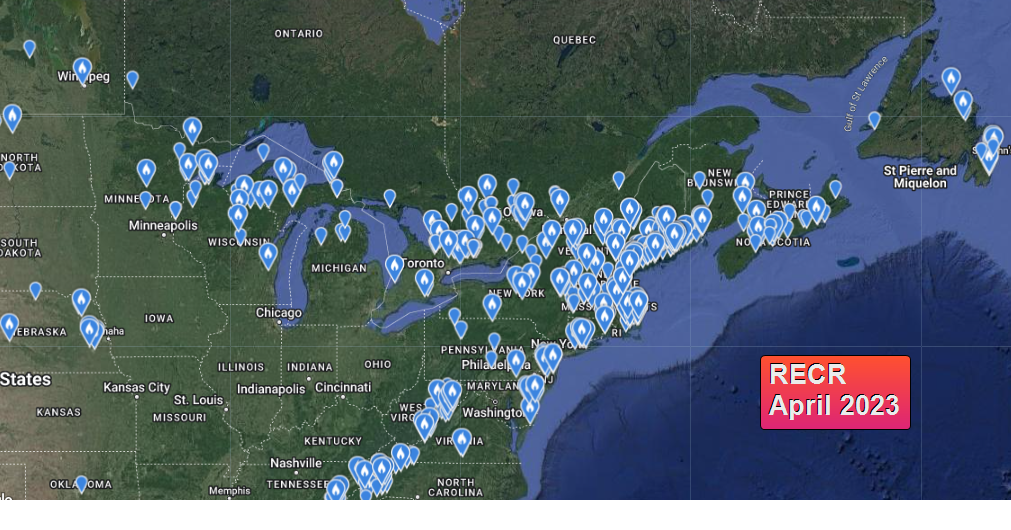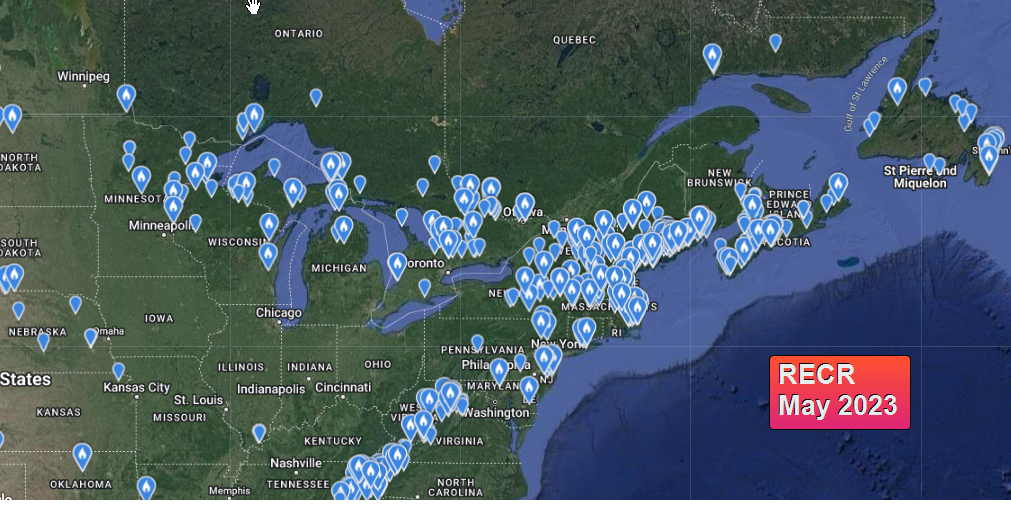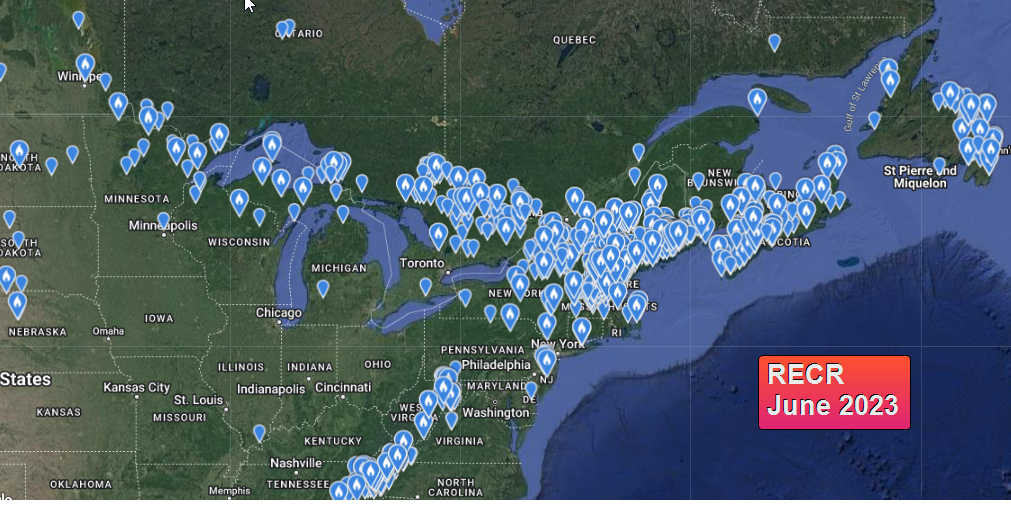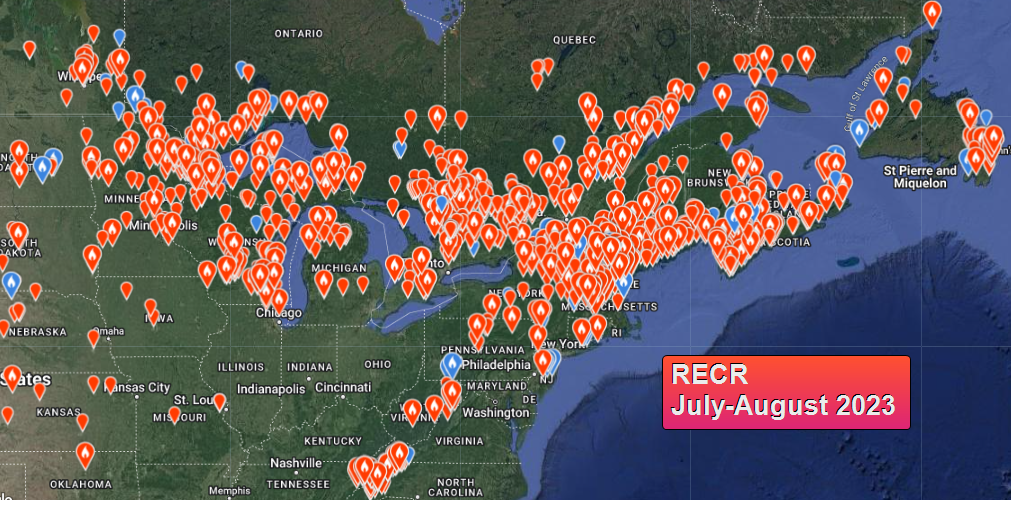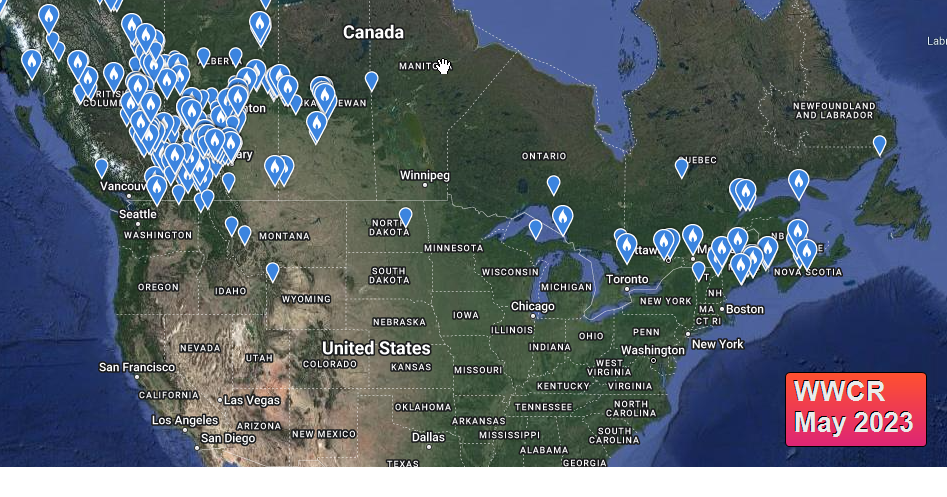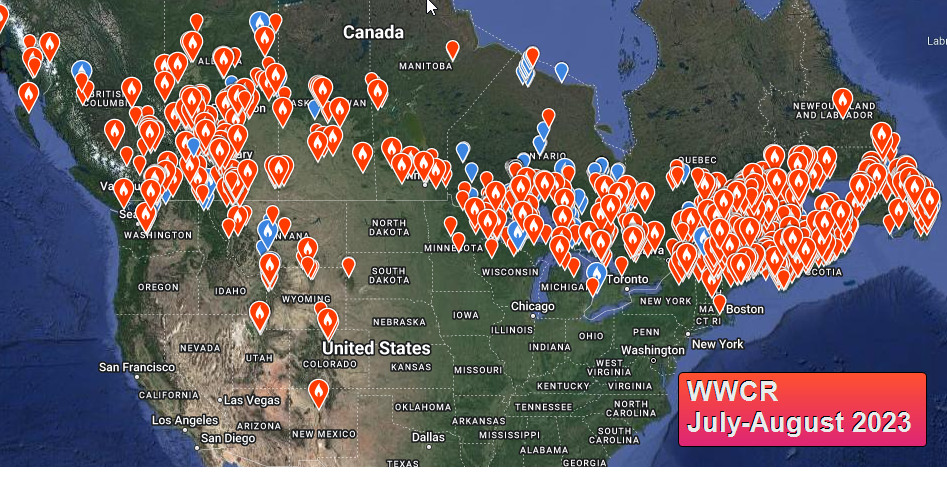Irruption Alert: Crossbills!
By Matthew Young, Ryan Mandelbaum and Matthew Williams
About three weeks ago on the Finches, Irruptions and Mast Crops FB page, we gave everyone a heads-up that it looked like Type 2 and 4 Red Crossbills were heading east. Ryan Brady in Wisconsin reported some of the first Type 4 in mid July. Since then, a significant eastward movement of Type 2 and 4 Red Crossbills has occurred. These two types are also on the move out west, so be on the lookout for them in unusual areas of the west as well.
There are at least 12 Red Crossbill call types in North America. Each is associated with its own core zone of occurrence and irruption zones, or places they move when food is scarce, and sometimes, birds will travel far beyond their usual haunts. Type 2 is the most widespread of the call types, and some birds can be found in the eastern United States with some regularity—it will even breed there. Type 4, meanwhile, is predominantly a bird of the Pacific Northwest and sometimes the Intermountain West region, and its appearance elsewhere is always notable. It is bit more common in the western Great Lakes, but a very rare call type in the northeastern states!
In just the past few weeks, FiRN volunteers have received recordings of Type 4 Red Crossbills from Minnesota, Wisconsin, Michigan, Ontario, Quebec, New Brunswick, Massachusetts, New Hampshire, and Maine. Just a week ago, August 6, Nicolas Main, Brian McAllister, Lisa Crupe, and Matt Young had a Type 4 at Sabbatis Bog north of Long Lake in New York’s Adirondack Mountains.
eBird Type 4 Red Crossbill map July-August
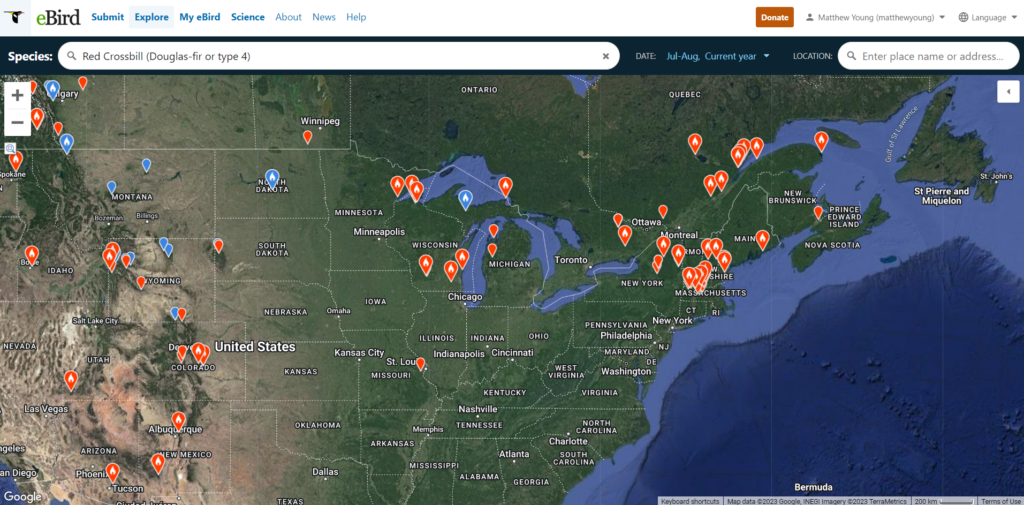
Type 4 is a medium-billed bird, most closely associated with “coastal” Douglas-firs. However, they less often will feed on “interior” Douglas-firs, spruces, and white pines. Their flight call is a distinctive, musical “plick-plick-plick.”
Meanwhile, we’ve received recordings of Type 2s from Minnesota, Wisconsin, Michigan, and Ontario, Quebec, New York, Massachusetts, New Hampshire and Maine.
eBird Type 2 Red Crossbill map July-August

Though commonly called the “ponderosa pine” crossbill, we like to think of the large-billed Type 2 as the eclectic crossbill. These birds feed on a variety of large-coned pines like lodgepole and Jeffrey pines in the west, plus red, jack, pitch, Virginia, and table mountain pines in the east. As any crossbill will do, they’ll feed on softer cones like spruces, too. This is a lower pitched “choowp-choowp-choowp” sounding bird.
For the last couple months, the “Northeastern Crossbill” Type 12 have moved back into their core zone of occurrence in the northeast as well. See the slideshow below showing the movement April to July/August. Many records still need to be entered into eBird to call type, so this map doesn’t capture how many have moved back into the area. This bird sounds more like a kip-kip-kip”
eBird Type 12 Red Crossbill map April-August 2023
Between the Type 12s moving back into the northeast in numbers, and type 2 and 4 invading the area from the west, you can see below on the slideshow how many Red Crossbills have moved into the northeast the last few months. These birds seem to be feeding on a fabulous Eastern white pine crop in the northeast. Be on the lookout for pairs, and if you get recordings please let us know! You might even come across a mixed pairing since Types 1, 2, 4, and 12 can be found in some of the same areas feasting on the white pine cone crop.
The crossbill invasion doesn’t end there! See (see slideshow below) how White-winged Crossbills, which enjoyed much breeding success feasting on the generational spruce cone crop in the western part of the continent last year, have now swung back east in numbers the last couple months.
This fall, be sure to keep your eyes to the pines and record any Red Crossbills you find because things are getting really interesting. Get out an enjoy crossbills now—some are even breeding. And if you’re lucky, you can add a new call type to your list.
Cover Photo Anne Esbenshade
Be sure to check out our iNaturalist Crossbill Foraging Project as well: https://finchnetwork.org/crossbill-foraging-project
FiRN is a nonprofit, and was been granted 501c3 status in 2020. We are a co-lead on the Evening Grosbeak Road to Recovery Project, and have funded upwards of $10,000 to go towards research, conservation and education for finch projects in the last year plus. FiRN is committed to researching and protecting these birds and other threatened finch species like the Evening Grosbeak, Rosy-finches, and Hawaii’s finches the honeycreepers, and if you have been enjoying all the blogs and identifying of Evening Grosbeak and Red Crossbill call types (upwards of 15,000 recordings listened to), redpoll subspecies and green morph Pine Siskins FiRN has helped with over the years, please think about supporting our efforts and making a small donation at the donate link below.

